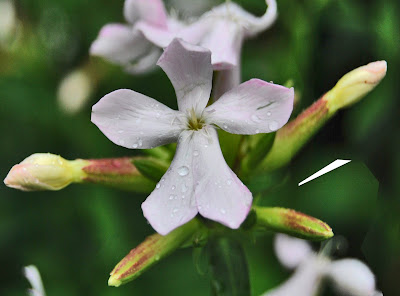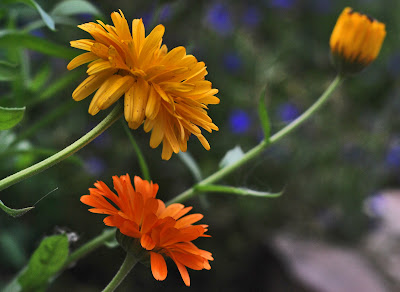
Common Soapwort / alm sæbeurt, aAs the name implies, it can be used as a very gentle soap, usually in dilute solution. It has been used to clean delicate or unique fabrics, such as the Turin shroud for example.
Common Soapwort (Saponaria officinalis) is a vespertine flower, and a common perennial plant from the carnation family (Caryophyllaceae). Other common names are Bouncing Bet and Sweet William; locally it is simply "the Soapwort" although there are about 20 species of soapworts altogether.
The scientific name Saponaria is derived from the Latin sapo (stem sapon-) meaning "soap," which, like its common name, refers to its utility in cleaning. From this same Latin word is derived the name of the toxic substance saponin, contained in the roots even 20 percent when the plant is flowering[1] (Indian soapnuts contain only 15 percent!). It starts producing a lather when in contact with water. The epithet officinalis indicates its medicinal functions.
Soapwort's native range extends throughout Europe to western Siberia. It grows in cool places at low or moderate elevations under hedgerows and along the shoulders of roadways.
The plants possesses leafy, unbranched stems (often tinged with red) grow in patches, attaining a height of 70 cm. The broad, lanceolate, sessile leaves are opposite and between 4 and 12 cm long. It's sweetly scented flowers are radially symmetrical and pink, or sometimes white. Each of the five flat petals have two small scales in the throat of the corolla. They are about 2.5 cm wide. They are arranged in dense, terminal clusters on the main stem and its branches. The long tubular calyx has five pointed red teeth.
In the northern hemisphere soapwort blooms from May to September, and in the southern hemisphere October to March.





